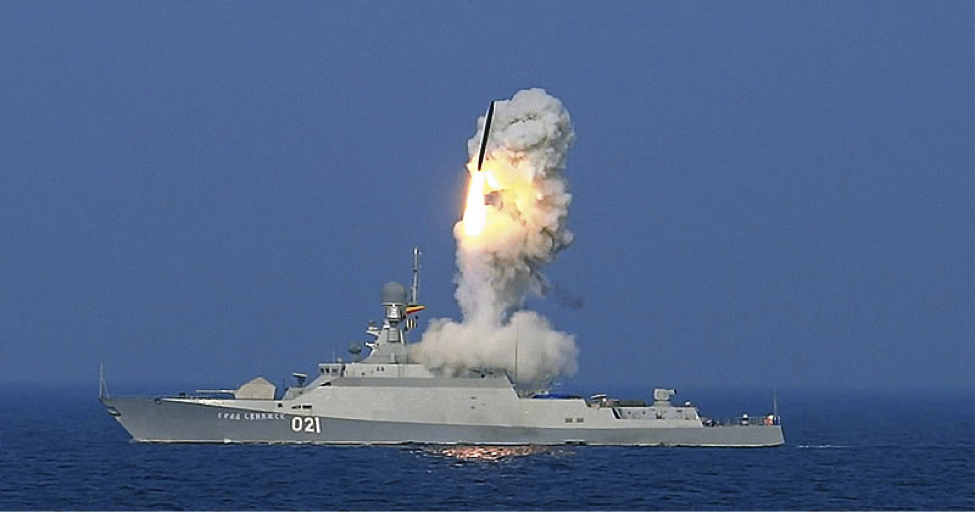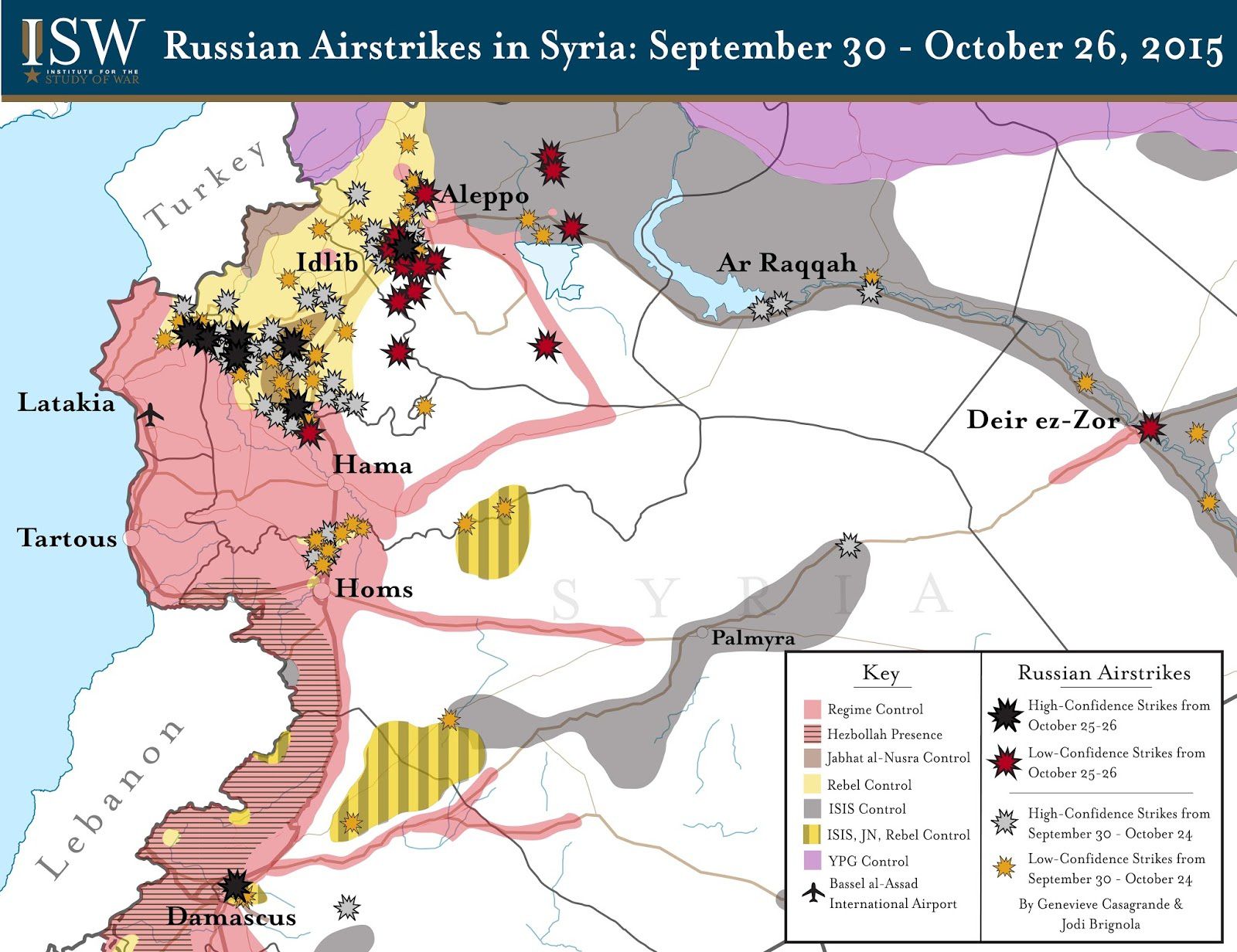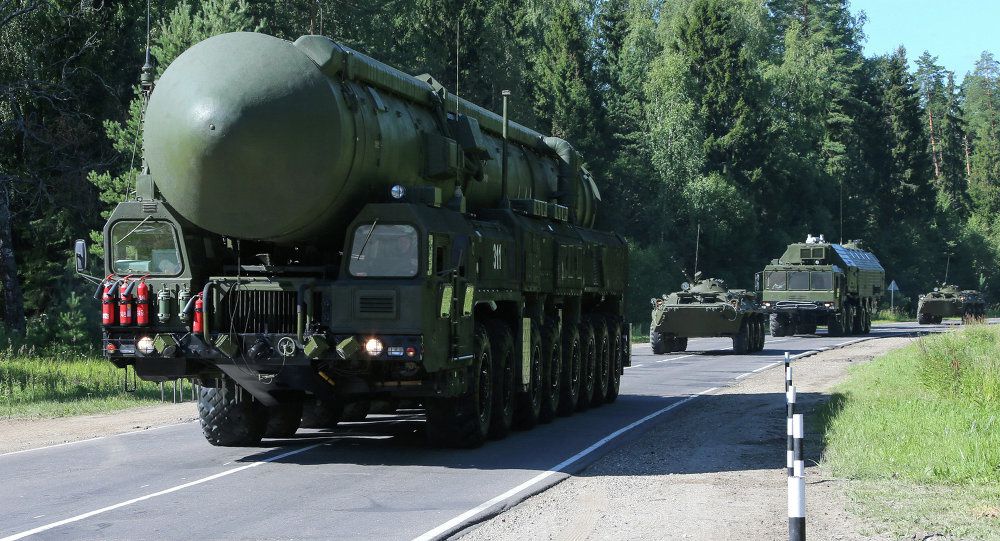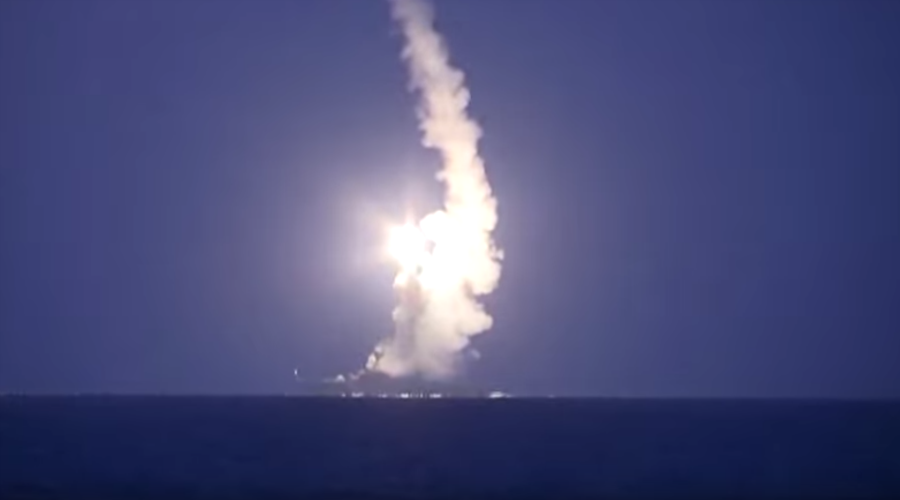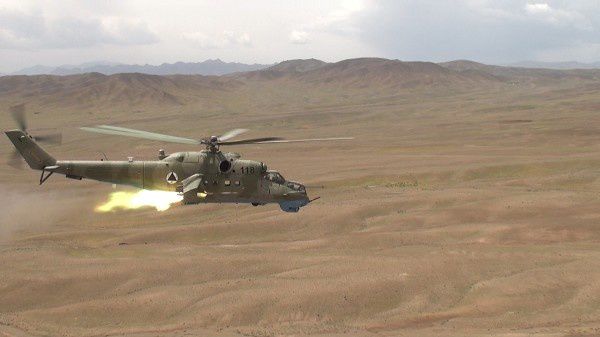October 11, 2015: Strategy Page
The Russian air support for the Syrian government forces has been effective, mainly because the Russians don’t care if civilians are in the way and get hurt. This is just as well because a lot of the Russian bombs are unguided. Russia does have GPS and laser guided bombs but not a lot of them. There are also many targets that can be destroyed just as easily with dumb bombs, especially if you are not concerned about dead civilians. The Russians are apparently shipping in thousands of unguided aircraft bombs, most (if not all) of them dating back to the Cold War (that ended in 1991). Syria, however is still using locally fabricated bombs and will probably continue to as Syrian helicopters are not equipped to drop aerial bombs. With Russian help the Syrian helicopter force will now increase but helicopters often make effective bombers. Since 2012 the Syrians have been dropping barrels filled with flammable liquids and explosives, rigged to explode when they hit the ground. This sort of thing is not unique to Syria and has been seen for years in Sudan where the government uses “barrel bombs” rolled out of transports and helicopters. These are not precision weapons, but if the target is a village or other residential area, they are accurate enough. The Syrian barrel bombs have been used frequently against civilian targets like markets, mosques, hospitals, schools and apartment buildings. This has persuaded many anti-Assad Syrians to flee the country which is exactly what the government wants. Now many of these Syrian refugees are forcing their way into Europe, which is another win as far as the Assads are concerned.
Russian troops began arriving in late August and by mid-September began launching air strikes. That accelerated on October 9th and will continue to do so as more and more Russian cargo ships arrive with weapons, troops, ammunition and equipment. This increase in Russian military aid to Syria solves several problems for Russia. For one, it prevents the looming collapse of the Assad government, which has been losing territory at an accelerating rate in 2015 and is facing a collapse in morale among its forces and civilian supporters. Russia has been a staunch ally of the Assad dynasty since the 1970s. Iran cannot provide more aid, mainly because despite the July agreement to lift sanctions on Iran that does not go into effect until early 2016 and until then Iran is as broke as ever. But the arrival of the Russian troops does boost Iranian morale and willingness to send in more troops to act as advisors and trainers.
Russia is only sending a few thousand ground troops but these are some of the best troops Russia has and ISIL and the other Islamic terrorist rebels will suffer much heavier casualties if they clash with these Russians. All this will boost morale among troops and Syrian civilians in Assad territory and make it more likely that a Russian peace proposal that keeps the Assads in power, even if it means a partition of Syria, will be more acceptable to the world. Russia says it is sending only “volunteers”. This is a policy adopted in Ukraine, and for good reason. While “acting strong” is popular with most Russians, the risk of your own conscripted sons getting sent to Ukraine or Syria and killed or maimed is definitely not popular. To the dismay of Russian leaders it was found that even when young volunteer (“contract”) soldiers get hurt there is popular backlash. This despite government willingness to pay compensation (not a Russian tradition) to families of the dead as well as to disabled soldiers. Thus Russia has an incentive to rely a lot on tech and mercenaries (mainly supplied by Iran) to avoid Russian casualties. That said the Russian force is not large (because Russian cannot afford a larger force) and they are depending on terror to help out. Russians make no secret of their indifference to civilian casualties and the use of terror against their enemies. ISIL sees this as more of a threat than the more high-tech and civilized Americans.
By mid-September Russia had brought in enough warplanes and troops to support and protect the airbase near the coast in Latakia province. Despite Russian talk about it all being about ISIL (al Qaeda in Iraq and the Levant), most of the attacks so far have been against the most immediate threats to the twenty percent of Syria that the Assad forces control. This means rebels who are trying to defeat the Assads and not, like ISIL, seeking to establish a worldwide Islamic religious dictatorship. To placate foreign criticism Russia did hint that a column might be sent east to threaten the ISIL capital Raqqa. That would certainly be possible but even the Russians realize that most of the ISIL gunmen in the east are based among the population outside Raqqa and while these fanatics would die in large numbers they would also be inflicting a lot of unwelcome casualties whoever the Russians had fighting on the ground. Nevertheless the Syrian government and their Iranian military advisors are examining the idea of sending a ground force of Syrian and mercenary (non-Russian) troops to Raqqa, assisted by ruthless Russian air power.
Russia wants to carry out a “heroic intervention” to defeat ISIL and earn some positive publicity. That sort of thing is badly needed as Russia is currently seen as a treacherous bully because of its aggression in Ukraine and elsewhere in East Europe. By the end of the year Russia expects to turn that around, even if some depict them as a treacherous and opportunistic hero. Smashing ISIL would nevertheless be praised and appreciated. It would also be seen as a defeat for America and affirmation of Russian might and loyalty to its allies. The main problem Russia faces is doing this with a minimum of Russian casualties. That means inspiring the Syrian military, the Hezbollah militia and Iranian mercenaries to do most of the dangerous work on the ground.
Russia admits that it is breaking the UN embargo to supply the Assad government with new weapons. That was clear as Russia announced the sale to Syria of another twelve MiG-29s. Only nine will be delivered by the end of 2016 and the last three will arrive in 2017. The Russia appears determined to immediately do a lot of rebuild what is left of the Syrian Air Force, which has suffered enormous (over 70 percent) losses since 2011. Russia has always provided tech and material (spare parts) support for this largely Russian fleet of warplanes and helicopters but not enough for the Syrians to keep more than 30 percent of the 370 aircraft and helicopters operational. The surge of Russian support will mean the Syrian Air Force can be rebuilt and thus be even more active. The 50 or so Russian aircraft in Syria consist of Su-34 and Su-30 fighter-bombers, Su-24M bombers and Su-25 ground attack aircraft as well as about a dozen armed helicopters. There are also many transport helicopters.
Turkey is threatening to shoot down Russian warplanes that continue to slip in and out of Turkish air space. Russia takes that threat seriously and apologized for several recent (October 3rd and 6th) incidents which appear to have been accidental. Russia says bad weather was at fault but the main problem is Syrian rebels operating close to the Turkish border and often crossing it unexpectedly. The Russian pilots will often lose track of the border when going after rebels who may have recently slipped across the border. There is another element in all this. Russia and Turkey are ancient enemies and Turkish public opinion backs using violence against Russian incursions, even accidental ones. Russia is in the process of increasing daily air strikes to a hundred or more a day but pilots are ordered to ensure that every sortie counts. This is especially true because the Russians have a big advantage over NATO here as the Syrian Army has lots of personnel who can speak Russian and are familiar with the procedures for calling in air strikes. So when the Russian pilots get a call for air support they know it is a confirmed target and the morale of the troops down there will soar if the Russian fighter-bombers can get the job done. This is what the Russian pilots are under orders to do. Russia could simply avoid rebels near the border but they know that the rebels would quickly exploit that.
In Syria additional Hezbollah, other Shia militia and Syrian Army forces are on the move in the northwest around Homs, Palmyra and Aleppo as well as in the south near the Israeli border. Rebel groups had recently gained territory in all these areas. This sudden counteroffensive is a direct result of the recent Russian intervention in Syria. This was very good news for Hezbollah and the Assad government. The Iran backed Hezbollah militia has been providing thousands of fighters inside Syria for the Iran backed Assad government but this has been increasingly unpopular among Hezbollah members and even more unpopular with Lebanese in general. That’s because Syria considers Lebanon a “lost province” and has always treated Lebanon badly. Hezbollah had to fight in Syria for the hated (by most Lebanese) Assad government because Iran has long been the main financial and military support for Hezbollah and demanded that Hezbollah send fighters to Syria. But Hezbollah leaders eventually told Iran that the Hezbollah operations (and casualties) in Syria were causing serious damage to the unity and effectiveness of Hezbollah in general. In fact, once it became clear that Russia was putting substantial combat forces in Syria, Hezbollah quietly informed Iran and the Assads that by the end of September Hezbollah would cease offensive operations in Syria and confine their participation to fighting Syrian rebel (especially Islamic terrorist groups) attempts to get into Lebanon. Decisions like this are very popular with most Lebanese and especially welcome by Hezbollah fighters, who always thought they had signed up mainly to defend Lebanon in general and the Shia minority of Lebanon in particular. Guarding the border is doing just that and will repair the damage to morale done because of combat operations inside Syria (and several thousand casualties suffered as a result). Now it is clear that Hezbollah, after receiving some additional weapons (including tanks) has been encouraged to do a little more. This appears to be something like pushing Syrian rebels much farther away from the Lebanese border as that would be tolerable to most Lebanese and help the Assad government as well. Putting Hezbollah forces on the Syrian border with Israel is also popular with many Lebanese, as long as the effort does not get a lot of Lebanese killed. Up north Iran is using thousands of foreign Shia volunteers it has armed, trained and paid. With Russian air support, as well as more sorties from Syrian warplanes (because of increased Russian aid) the pro-government forces are advancing. Many of the rebels, except for ISIL, have not experienced many air strikes this year, mainly because the U.S. led coalition aircraft have concentrated on ISIL. The Russians don’t much care about ISIL unless ISIL forces are in the way of the pro-government ground troops. American warplanes have been ordered to stay at least 30 kilometers away from any Russian aircraft and not interfere with Russian operations. This government offensive may not get far but it is off to an encouraging start and that is welcome news back in Iran. That’s largely because it is no secret in Iran that there are over a thousand Iranian trainers and advisors in Syria and these men have played a large role in keeping the Assad government from being destroyed by all the rebel Islamic terror groups constantly attacking since 2012. Officially Iran insists it has no military personnel in Syria, but there is a lot of evidence there, and in Iran, to contradict that claim. It is also widely believed (at least inside Iran) that Iran convinced Russia to intervene. This is in line with the ancient Iranian tradition of wisely using wartime diplomacy to create opportunities and turn defeats into victories. A senior Iranian general (Qassem Sulaimani, head of the Quds Force) is known to have made two semi-secret trips to the Russian capital recently.
The Russian intervention in Syria has caused Iraq to openly accuse the United States of being ineffective and unwilling to do what it takes to defeat ISIL. Iraqi leaders pointed out that over a year ago the U.S. and its Arab allies promised sufficient air support and other military assistance to defeat ISIL. That has not worked. Iraq believes the United States lacks the will to get the job done while Iran and Russia do have what it takes. Finally Iraq was considering asking Russia to extend its bombing campaign to attacks on ISIL in western Iraq and Mosul. This would involve allowing Russia to operate from Iraqi air bases. What is meant here but not being said is that Iraq disagrees with the American ROE (Rules of Engagement) which puts more emphasis on protecting civilians than in destroying the enemy. ISIL uses lots of human shields to protect its men and facilities from air attack. Russia and Arab air forces will bomb a target even if there are human shields present.
Russia has brought some of its new electronic jamming equipment to Syria and these are being used to jam ISIL and NATO communications. Some NATO radars and satellite signals are also being jammed. NATO is already familiar with some of these jammers, particularly the truck mounted Krasukha-4, which has been encountered in eastern Ukraine (Donbas).
Meanwhile Turkey continues to battle rebellious PKK Kurds in southeast Turkey and northern Iraq. The Kurdish government in northern Iraqi tolerates the Turkish air raids on PKK camps in remote areas and publicly denounces the PKK (although many Iraqi Kurds support the PKK goal of a Kurdish state formed from Kurdish populated parts of Iraq, Turkey, Iran and Syria).
October 10, 2015: In central Syria (Hama province) Syrian soldiers (assisted by Hezbollah and local Alawite militias) recaptured areas outside the city of Hama. This was aided by Russian and Syrian air strikes. Al Nusra has been fighting government forces in Hama since July in an effort to get into neighboring Latakia province. Latakia is a major center of government support because it is largely Alawites and where the Assad clan comes from.
In the southwest (Quneitra province) government and rebels have renewed their fighting. This is largely the result of the Russian intervention and Hezbollah agreeing to relax its new rule that all its gunmen would remain on or near the Lebanese border. The major target is the Southern Front rebels who are now on the defensive.
Meanwhile to the north ISIL took advantage of the growing Russian and Syrian pressure on al Nusra to attack and take control of some villages outside Aleppo. Russian air strikes on al Nusra forces was, in this case, a direct benefit to ISIL.
American and Russian officials met (via video conference) to work out procedures to avoid conflicts between NATO and Russian aircraft over Syria. These were described as “flight safety” discussions.
In Turkey two bombs went off in the capital near a demonstration by (mostly) Kurds calling for an end to fighting between the PKK (Turkish Kurdish separatist rebels) and Turkish security forces. Nearly a hundred people were killed and nearly 300 wounded. No one took responsibility for this. The Turks suspect either the PKK (that is hostile to Turkey and Kurds who do not support PKK) or ISIL (whose capital, Raqqa, is threatened by another Kurdish offensive by Syrian Kurds). Some Kurds suspect the government planted the bombs because most of the demonstrators were moderate Kurds whose votes in recent elections cost the current government a lot of political power.
October 9, 2015: There appeared rumors about a Russian MiG-29 being shot down by Turkish F-16s in northwest Syria after the MiG-29 violated Turkish air space. The rumors persisted over the weekend because no one would confirm or deny them. NATO did say they knew nothing about the incident and there were no pictures of the wreckage. Meanwhile Russia said it had launched 67 air strikes in the last 24 hours, the most in any one day since its forces first arrived in August. Previous to this Russia had been launching about ten air strikes a day. The surge today was mainly directed at targets in central Syria and the northwest (Hama, Latakia and Idlib provinces) as well as Raqqa province in the east.
There were also rumors that turned out to be true about more than twenty explosions in the ISIL capital of Raqqa. These were the result of air attacks by Russian aircraft on Raqqa. The Syrian government wants Russian help to capture Raqqa from ISIL before Syrian rebels (mainly the Syrian Kurds) do so. ISIL considers the Syrian Kurds less of a threat than the Russian backed Syrian military. That’s because the Kurds have Americans providing air support and the American ROE makes the use of civilians as human shields a very effective tactic. But that does not work against the Russians. So while civilians were forced to stay in Raqqa when there was a threat of American air strikes now that the Russian threat seems more likely ISIL is preparing to force civilians out of the city. The ISIL fear is that the city would undergo a siege and in a situation like that the civilians would be a burden, not a form of protection from air strikes.
October 8, 2015: In the north (outside Aleppo) a senior Iranian officer (Hossein Hamedani) was killed in combat. Hamedani was a general in the IRGC (Iranian Revolutionary Guard Corps) and apparently in charge of coordination between the Syrian army and Iranian mercenaries (Shia volunteers from Iran and elsewhere who are paid, trained and armed by Iran) fighting for the Assads. Iran officially denies that IRGC personnel are in Syria but the deaths of senior IRGC officers are hard to keep quiet. The Iranian government said that Hamedani was simply visiting Syria.
American intelligence analysts believe that at least four of the 26 cruise missiles fired by Russian warships in the landlocked Caspian Sea at targets in Syria crashed in Iran. Both Russia and Iran deny this and insisted that all 26 missiles fired on the 7th hit their targets in Syria and that there were no civilian casualties.
Saudi Arabia has increased arms shipments to three Syrian rebel groups (Jaysh al Fatah, the Free Syrian Army and the Southern Front). None of these is known to be associated with al Qaeda or ISIL although these groups will sometimes trade (or surrender, if forced) weapons and ammo to al Nusra or ISIL groups. For this reason the United States is halting its program of training and arming the Free Syrian Army. The American efforts to aid Syrian rebels were always crippled by rules that prohibited aid to any rebels that might cooperate with Islamic terrorist rebel groups (especially those linked to al Qaeda or ISIL). The same criteria was used to select Syrians to train. Because so many Syrian rebels were Islamic radicals or eager to back Islamic terrorists because they were the most effective fighters, few suitable candidates could be found. It appears that the Americans are going to quietly copy from the Arab aid program that concentrates on rebel groups that share a hatred of ISIL. This means more aid for the Kurds, who are not attracted to Islamic radicalism despite being Sunni Moslems. The Kurds attribute this to their not being Arab. Russia is on the other side of this, not caring so much about ISIL right now and intent on destroying Syrian rebels no matter what their views on Islamic terrorism. It is estimated that so far only about ten percent of Russian air strikes have hit ISIL
October 7, 2015: Russian troops, operating about a hundred kilometers east of their main base at Latakia, used howitzers and rocket launchers to hit rebel targets outside the rebel held city of Hama. This was the first use of Russian controlled and operated artillery in Syria. About the same time Russian warships in the Caspian Sea launched 26 Klub (Kalibr) cruise missiles at rebel targets in Syria.
A Russian delegation has arrived in Israel for more talks about cooperation and coordination between Russian and Israeli military forces now that Russian troops and warplanes are operating inside Syria. An initial agreement was made on September 21st.
October 5, 2015: Several prominent Sunni clerics in Saudi Arabia have called for a jihad (holy war) against the Assad government of Syria as well as Russia and Iran. These conservative clerics have been known to praise Islamic terrorists in the past.
October 3, 2015: Local witnesses confirmed that ISIL had destroyed another ancient structure (a Roman Arch of Triumph) near Palmyra. ISIL took this central Syrian site (in Homs province) back in May and since August has been destroying ancient ruins. This was an ancient oasis city that was largely abandoned a century ago and now people live in nearby villages. Palmyra is a major tourist site and it was long feared that ISIL would destroy ruins for being un-Islamic.
October 2, 2015: In Iraq the fighting, mostly against ISIL, left 717 Iraqis (security forces and civilians) dead in September. This is about half what it was in August, largely because military operations against ISIL are stalled. On the plus side ISIL activity seems to be stalled as well, in part because ISIL is now more intent on dealing with the new Russian threat in Syria. Still Iraq was a lot less violent than neighboring Syria where the death toll was 76,000 in 2014. That’s over 91,000 dead during 2014 for the two countries where ISIL is most active. The death toll in Syria has risen more sharply than in Iraq. At the same time it is clear that ISIL, while still a threat, is no longer on the offensive anywhere.
September 30, 2015: Russia told foreign nations (especially NATO) to keep its aircraft out of Syrian air space. NATO refused and continued air operations over Syria as did Arab members of the American led air coalition. Russian warplanes also began their daily strikes on ground targets today and American aircraft did not interfere.
September 27, 2015: Israeli warplanes attacked Syrian Army units just across the border from Israel in Quneitra province because of recent rocket fire that had landed in Israel. These attacks remind Syrian commanders that such attacks have serious consequences. Often these attacks are accidents but when that is unclear, Israel retaliates, just to be certain that the other side understands.
Iraq announced that it had established an intelligence sharing arrangement with Iran, Syria and Russia and invited the United States to join.


